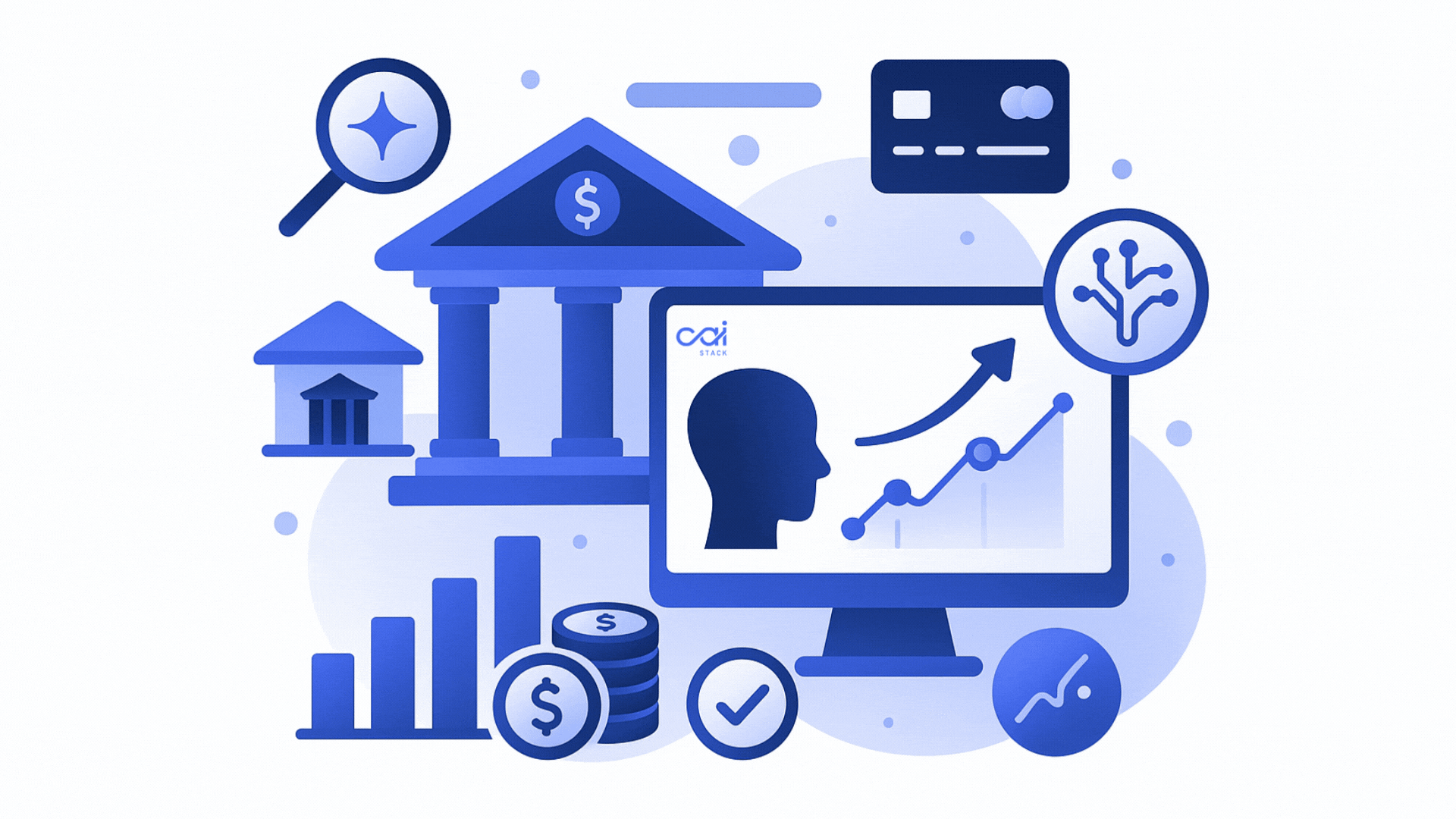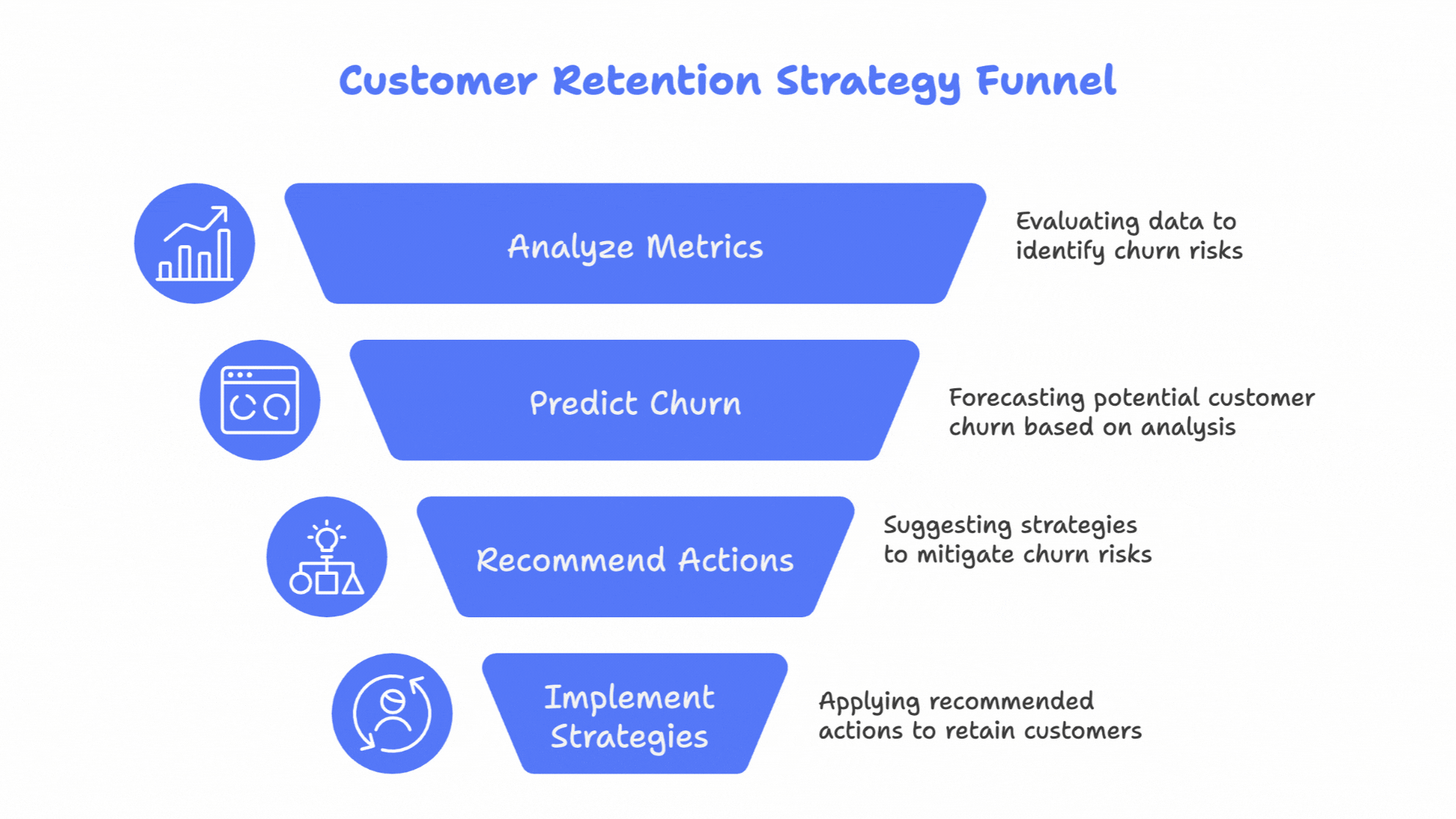CAIStack Team
Churn prediction AI is changing how banks and financial institutions approach customer relationships. Instead of reacting after customers leave, smart organizations are using data to predict what happens next.

Your customer called three times last month about fees. They reduced their average transaction amount by 40%. Their mobile app usage dropped to almost nothing.
What does this tell you? If you're like most financial institutions, you won't know until they close their account.
But what if you could see these patterns before it's too late? What if you knew exactly which customers need attention and what actions would keep them engaged?
That's where predictive customer analytics comes in.
The AI market in financial services is already valued at $26.2 billion in 2024 and growing at 22% annually. Banks are investing because predictive insights deliver real results.
Most banks still operate like historians. They collect mountains of data about what customers did last quarter, last year, or five years ago.
A recent study found that banks with top-tier customer advocacy grow revenues 1.7× faster, as advocates hold more products and drive engagement clear evidence that anticipating customer needs pays off.
Here's the issue: historical data tells you what happened, not what's going to happen.
A customer who's been loyal for 10 years might seem stable in your reports. But their recent behavior could be screaming that they're about to leave. Traditional analytics miss these subtle shifts.
According to McKinsey’s 2025 report, most banks still act like ‘historians,’ analyzing the past but missing early churn signals hidden in customer behavior.
Customer behavior forecasting works differently from traditional analytics. Instead of looking at what customers did, it predicts what they'll do next.
The technology analyzes hundreds of data points simultaneously:

Knowing a customer might leave is only half the battle. The real question is: what do you do about it?
This is where AI becomes your competitive advantage.
Traditional approaches rely on generic campaigns. Send everyone the same promotional email. Offer the same rate reduction. Hope something sticks.
AI-driven systems work differently. They analyze each customer's specific situation and recommend personalized interventions.
Consider JPMorgan: with more than 100 AI tools already in deployment, the bank cut servicing costs by nearly 30% and boosted customer engagement by 25%
Ready to see how AI can anticipate your customers' needs before they even know them themselves? Schedule a conversation to explore what's possible for your organization.
Traditional banking metrics miss the full impact of predictive customer analytics. You need new ways to measure success.
The churn prediction AI market size itself is projected to reach nearly $1.96 billion in 2024, growing at over 18%.3 annually.
Here's what changes when you move from historical reporting to predictive insights:
The technology handles pattern recognition. Your people handle relationship building.
Churn prediction AI, and customer behavior forecasting aren't just nice-to-have technologies anymore. They're essential tools for staying competitive in financial services.
Your customers are already telling you what they need through their behavior. The question is whether you're listening early enough to act on it.
Next best action AI gives you the roadmap. But you still need to take the first step.
CAI Stack helps financial institutions implement AI-driven customer analytics that predict behavior and recommend actions.
Get your free demo today to see how predictive insights can change your customer relationships.
Subscribe to get the latest updates and trends in AI, automation, and intelligent solutions — directly in your inbox.
Explore our latest blogs for insightful and latest AI trends, industry insights and expert opinions.
Empower your AI journey with our expert consultants, tailored strategies, and innovative solutions.